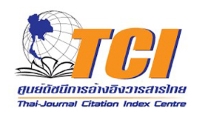JOURNAL DETAIL
High Purity Polycrystalline Silicon Growth and Characterization
Paper Type |
Contributed Paper |
Title |
High Purity Polycrystalline Silicon Growth and Characterization |
Author |
Uda Hashim, Abang A. Ehsan, and Ibrahim Ahmad |
Email |
uda@kukum.edu.my |
|
Abstract: Polysilicon is the main raw material in making silicon wafers in which integrated circuits are made of. The polysilicon production chains start off with high purity sand which is decomposed into metallurgical-grade silicon (MGS). The reaction of MGS with hydrogen chloride (HCl) will form trichlorosilane (SiHCl3) which then goes through several purification steps in order to obtain pure SiHCl3. The subsequent reaction of SiHCl3 and H2 in a chemical vapour deposition (CVD) reactor will deposit very pure polysilicon onto a thin monosilicon seed rod. The polysilicon samples were sent for testing at an independent laboratory and
analyzed using XRF spectroscopy to determine the main impurities of P, B, O and C. Several other impurities were also measured which includes Fe, Cr, Ni, Cu, Zn, and Sb. Based on the measurement of the impurity concentrations, the purity of the polysilicon is at 99.9995% which is below the requirement for an electronic-grade polysilicon which is 99.999999999%. Resistivity measurement shows a high concentration of P content which indicates that it is an n-type polysilicon. |
|
Start & End Page |
47 - 53 |
Received Date |
2006-07-21 |
Revised Date |
|
Accepted Date |
2006-11-13 |
Full Text |
Download |
Keyword |
polysilicon, trichlorosilane, czochralski (CZ) method, float zone (FZ), solar cell grade silicon (SGS), electronic grade silicon (EGS) |
Volume |
Vol.34 No.1 (JANUARY 2007) |
DOI |
|
Citation |
Hashim U., Ehsan A.A., and Ahmad I., High Purity Polycrystalline Silicon Growth and Characterization, Chiang Mai Journal of Science, 2007; 34(1): 47-53. |
| View:846 Download:609 | |
RELATED ARTICLE
Adhesion Mechanism of Different Alkyltrichlorosilanes Enhanced Superhydrophobicity on Superhydrophilic SiO2 Film Prepared by Dip Coating
page: 823 - 828
Author:Atchara Sriboonruang, Tewasin Kumpika, Ekkapong Kantarak, Wattikon Sroila, Pisith Singjai, Narin Lawan, Sairoong Muangpil and Wiradej Thongsuwan
Vol.47 No.4 (Special Issue II : July 2020) View: 1,094 Download:1,399
page: 823 - 828
Author:Atchara Sriboonruang, Tewasin Kumpika, Ekkapong Kantarak, Wattikon Sroila, Pisith Singjai, Narin Lawan, Sairoong Muangpil and Wiradej Thongsuwan
Vol.47 No.4 (Special Issue II : July 2020) View: 1,094 Download:1,399
Copyrights © Since 2021 All Rights Reserved by Chiang Mai Journal of Science










